Description
Accounting for Governmental and Non-Profit Entities
Accounting for Governmental and Non-Profit Entities Wilson Reck Kattelus
Accounting for Governmental and Non-Profit Entities Wilson Reck Kattelus 15th
Accounting for Governmental and Non-Profit Entities Wilson Reck Kattelus 15th Test Bank
Accounting for Governmental and Non-Profit Entities Wilson 15th Edition Test Bank
***THIS IS NOT THE ACTUAL BOOK. YOU ARE BUYING the Test Bank in e-version of the following book***
Name: Accounting for Governmental and Non-Profit Entities
Author: Wilson Reck Kattelus
Edition: 15th
ISBN-10: 0073379603
Type: Test Bank
– The test bank is what most professors use an a reference when making exams for their students, which means there’s a very high chance that you will see a very similar, if not exact the exact, question in the test!
– The file is either in pdf, doc, rtf or zipped in the package and can easily be read on PCs and Macs.
– Delivery is INSTANT. You can download the files IMMEDIATELY once payment is done.
If you have any questions, please feel free to contact us. Our response is the fastest. All questions will always be answered in 6 hours., most of the time within 30mins
We also faced similar difficulities when we were students, and we understand how you feel.
But now, with the Accounting for Governmental and Non-Profit Entities 15th Test Bank, you will be able to
* Anticipate the type of the questions that will appear in your exam.
* Reduces the hassle and stress of your student life.
* Improve your studying and also get a better grade!
* Get prepared for examination questions.
* Can save you time and help you understand the material.
This is the quality of service we are providing and we hope to be your helper.
Delivery is in the next moment. Test Bank is accurate.
Prepare to receive your Accounting for Governmental and Non-Profit Entities 15th Test Bank in the next moment.
ISBN-10: 0073379603
If you have any questions, or would like a receive a sample chapter before your purchase, please contact us at inquiry@testbankcorp.com
Accounting for Governmental and Non-Profit Entities
Accounting for Governmental and Non-Profit Entities Wilson Reck Kattelus
Accounting for Governmental and Non-Profit Entities Wilson Reck Kattelus 15th
Accounting for Governmental and Non-Profit Entities Wilson Reck Kattelus 15th Test Bank
Accounting for Governmental and Non-Profit Entities Wilson 15th Edition Test Bank
c1
Student: ___________________________________________________________________________
1. General purpose governments generally provide a wider range of services to their residents than do special purpose governments.
True False
2. Examples of special purpose governments include cities, towns, and public schools that receive tax revenue to finance the services they provide.
True False
3. The Governmental Accounting Standards Board (GASB) is the body authorized to establish accounting principles for all state and local governments, both general purpose and special purpose.
True False
4. A characteristic common to governmental and not-for-profit organizations is operating purposes that are other than to provide goods or services at a profit or profit equivalent.
True False
5. The needs of users of governmental financial reports are the same as those of users of business financial reports.
True False
6. The Federal Accounting Standards Advisory Board (FASAB) recommends accounting principles and standards for the federal government and its agencies and departments.
True False
7. The FASB, GASB, and FASAB all focus their standards on both internal and external financial reporting.
True False
8. Interperiod equity refers to the concept that current-year revenues are sufficient to pay for services provided that year, so that future taxpayers will not be required to assume the burden for services previously provided.
True False
9. The minimum requirements for general purpose external financial reporting are (1) management’s discussion and analysis (MD&A), (2) the basic financial statements, including the notes to the financial statements, and (3) combining and individual fund financial statements.
True False
10. The statement of net assets and the statement of activities are the two government-wide financial statements required by GASBS 34.
True False
11. The governmental fund financial statements are intended to report on fiscal accountability.
True False
12. The basis of accounting under which revenues are recognized when measurable and available for spending and expenses when resources are consumed is the modified accrual basis of accounting.
True False
13. The Governmental Accounting Standards Board is assigned responsibility for setting accounting and financial reporting standards for
A. Governments; such as federal agencies, states, cities, counties, villages, and townships.
B. State and local government entities and governmentally-related units and agencies, such as utilities, authorities, hospitals, and colleges and universities.
C. Not-for-profit organizations.
D. State and local government and all not-for-profit organizations.
14. The body that has been established to recommend accounting and financial reporting standards for the federal government is the
A. Financial Accounting Standards Board (FASB).
B. Governmental Accounting Standards Board (GASB).
C. Cost Accounting Standards Board (CASB).
D. Federal Accounting Standards Advisory Board (FASAB).
15. The Financial Accounting Standards Board has the responsibility for setting accounting and financial reporting standards for
A. All not-for-profit organizations that are nongovernmental and business entities.
B. All special purpose governments.
C. All not-for-profit organizations.
D. All federal government agencies.
16. Which of the following distinguishes governments from nongovernmental not-for-profit organizations?
A. Absence of profit motive.
B. The power to enact and enforce a tax levy.
C. Resource providers do not expect benefits proportional to the resources provided.
D. Absence of a defined ownership interest that can be sold, transferred, or redeemed.
17. Which of the following is identified by the GASB as the “cornerstone” of all financial reporting in government?
A. Understandability.
B. Representational faithfulness.
C. Accountability.
D. Interperiod equity.
18. Which of the following organizations issue standards that are intended for both internal and external users of financial information?
A. Federal Accounting Standards Advisory Board.
B. Governmental Accounting Standards Board.
C. Financial Accounting Standards Board.
D. American Institute of CPAs.
19. All of the following characteristics may indicate that an organization is governmental in nature except:
A. The organization is a public corporation or body corporate and politic.
B. Popular election of officers or appointment of a controlling majority of the organization’s governing board by officials of a state or local government.
C. The organization is legally separate and its governing body has discretion to manage the organization’s affairs without approval by a government.
D. The power to enact and enforce a tax levy.
20. Which of the following is not an objective of financial reporting by state and local governments?
A. To assist users in assessing the adequacy of systems and controls.
B. To assist users in assessing financial condition and results of operations.
C. To assist financial report users in comparing actual financial results with the legally adopted budget.
D. To assist in determining compliance with finance-related laws, rules, and regulations.
21. Which of the following groups is considered a primary user of a state or local government’s general-purpose external financial statements?
A. Citizens.
B. Managers and administrators.
C. Employees.
D. Special interest groups.
22. One of the minimum requirements for general purpose external financial reporting is (are):
A. Management’s discussion and analysis (MD&A).
B. Consolidated financial statements.
C. Other supplementary information, such as combining and individual fund statements.
D. Statistical information.
23. A comprehensive annual financial report (CAFR) prepared in conformity with GASB recommendations should include which of the following sections?
A. Letter of transmittal, MD&A, and financial.
B. Introductory, financial, and statistical.
C. Introductory, MD&A, and financial.
D. Letter of transmittal, financial, and supplementary.
24. Which of the following would be included in a properly prepared comprehensive annual financial report (CAFR), but not in the minimum requirements for general purpose financial reporting specified by GASBS 34?
A. Management discussion and analysis (MD&A).
B. Government-wide financial statements.
C. Notes to the financial statements.
D. Combining and individual fund financial statements.
25. A statistical section should be included in
A. A comprehensive annual financial report (CAFR).
B. The basic financial statements.
C. The notes to the financial statements.
D. Required supplementary information, other than MD&A.
26. Which of the following would typically not be included in the introductory section of a comprehensive annual financial report?
A. Title and contents page.
B. Letter of transmittal.
C. A description of the government.
D. Summary of the government’s current financial position and results of financial activities.
27. The section of the comprehensive annual financial report that presents tables and charts showing social and economic data in addition to financial trends, fiscal capacity, and operating information of the government is the:
A. Introductory section.
B. Management discussion and analysis section.
C. Statistical section.
D. Financial section.
28. Which of the following information should be included in the financial section of a comprehensive annual financial report?
A. Transmittal letter.
B. The basic financial statements, including notes thereto.
C. Tables and charts showing demographic and economic data.
D. A description of the government.
29. On what should the government-wide financial statements report?
A. Net assets and results of financial operations of the government as a whole.
B. Fiscal accountability.
C. The cost of government services.
D. Budgetary compliance.
30. The fund financial statements for governmental funds should include a
A. Statement of cash flows.
B. Statement of revenues, expenses, and changes in fund net assets.
C. Balance sheet.
D. Statement of activities.
31. On what should the governmental fund financial statements report?
A. Net assets and results of financial operations of the government as a whole.
B. Fiscal accountability.
C. Operational accountability.
D. Cost of government services.
32. Which of the following reconciliations is required in the basic financial statements of a state or local government?
A. Total fund balances on the balance sheet—governmental funds to total governmental activities net assets on the government-wide statement of net assets.
B. Total net assets on the statement of net assets—proprietary funds to total business-type activities net assets on the government-wide statement of net assets.
C. Total net assets on the statement of fiduciary net assets to total fiduciary activities net assets on the government-wide statement of net assets.
D. Total fund balances on the balance sheet—governmental funds to total changes in fund balances on the statement of revenues, expenditures, and changes in fund balances—governmental funds.
33. Which of the following types of organizations may be subject to FASB jurisdiction?
A. A state hospital.
B. A college or university.
C. A public school district.
D. A public sanitation district.
34. Members of the Governmental Accounting Standards Board are appointed by the:
A. Financial Accounting Standards Board.
B. Governmental Accounting Standards Board.
C. American Institute of Certified Public Accountants.
D. Financial Accounting Foundation.
35. The organization that designates which authoritative standard setting body is responsible for establishing accounting and financial reporting standards for particular kinds of organizations (e.g., federal, state, and local government, not-for-profit, and business organizations) is the:
A. American Institute of Certified Public Accountants.
B. Financial Accounting Foundation.
C. Government Finance Officers Association.
D. Association of Government Accountants.
36. Recognizing revenues when measurable and available for paying current obligations and expenditures when incurred describes which basis of accounting?
A. Accrual.
B. Modified accrual.
C. Modified cash.
D. Budgetary.
37. Enterprise funds are primarily distinguished from internal service funds by the:
A. Type of customers they serve.
B. Different basis of accounting they use.
C. Different kinds of financial statements used to present their financial information.
D. Different budgeting approaches used.
38. Explain the essential differences between general purpose and special purpose governments and give several examples of each.
39. Explain what distinguishes governmental not-for-profit organizations from nongovernmental, not-for-profit organizations. Why is such a distinction necessary?
40. Identify and explain the characteristics that distinguish governmental and not-for-profit entities from business entities.
41. GASB and FASB standards are concerned only with external financial reporting whereas FASAB standards are concerned with both internal and external financial reporting. Do you agree with this statement? Why or why not?
42. Why should persons interested in reading financial reports of governmental and not-for-profit entities be familiar with standards set by the GASB and FASB?
43. Explain in your own words why accountability is the cornerstone of all financial reporting in government.
44. In your own words state the primary uses the GASB believes external users have for financial reports of state and local governments. For contrast, state the uses the FASB believes external users have for the financial reports of not-for-profit organizations.
45. Describe the difference between a comprehensive annual financial report (CAFR) and the GASBS 34 financial reporting model for state and local governments.
46. Distinguish between combining financial statements of a governmental entity and basic financial statements.
47. What information is the Management Discussion and Analysis (MD&A) intended to provide?

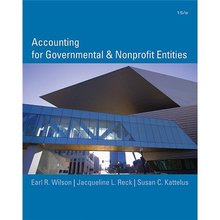
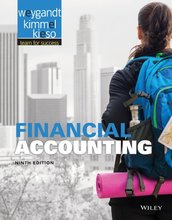
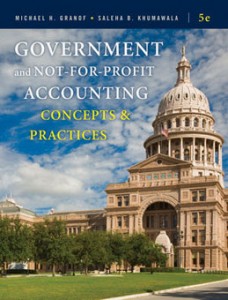
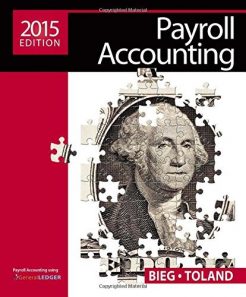
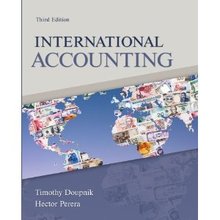

Reviews
There are no reviews yet.